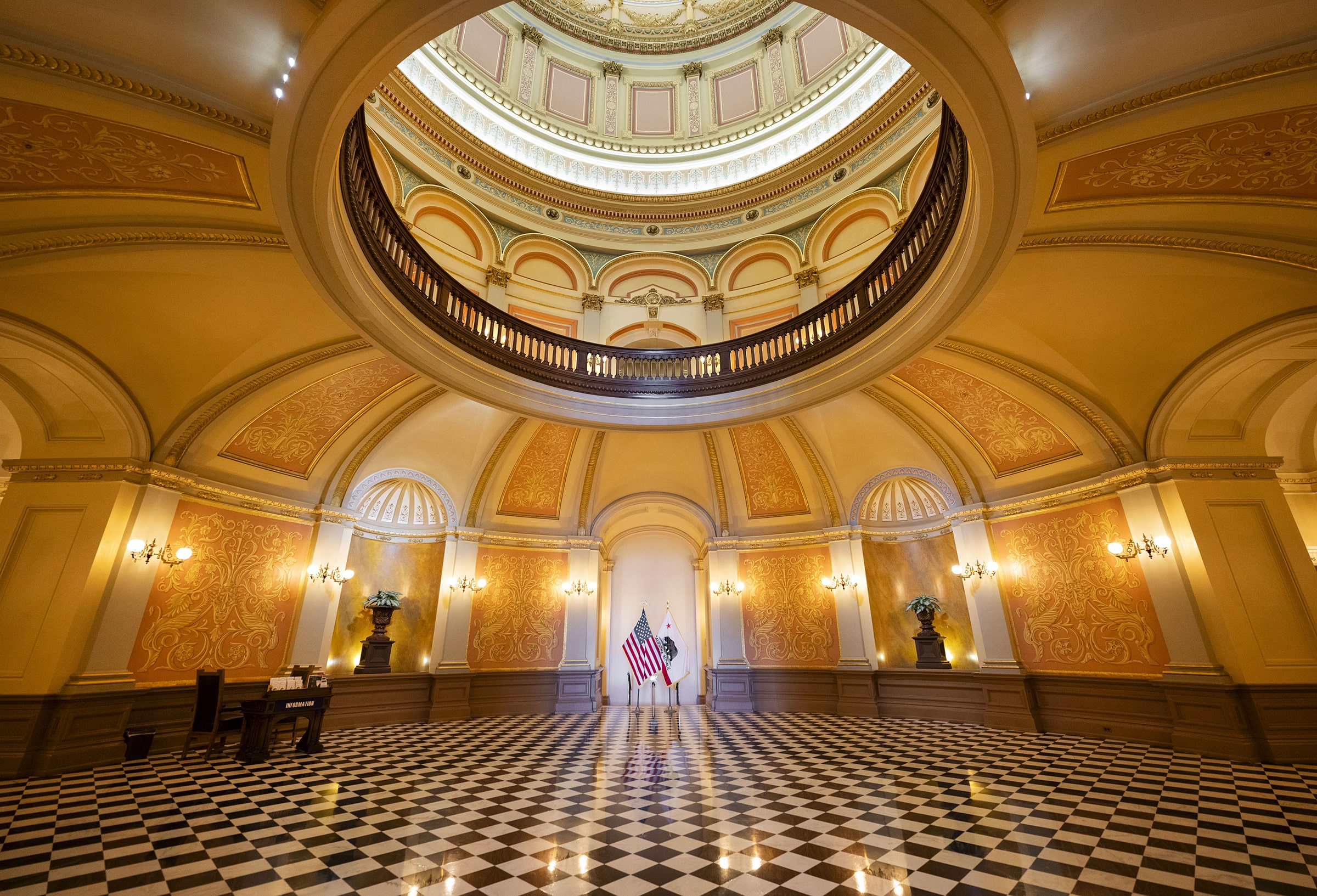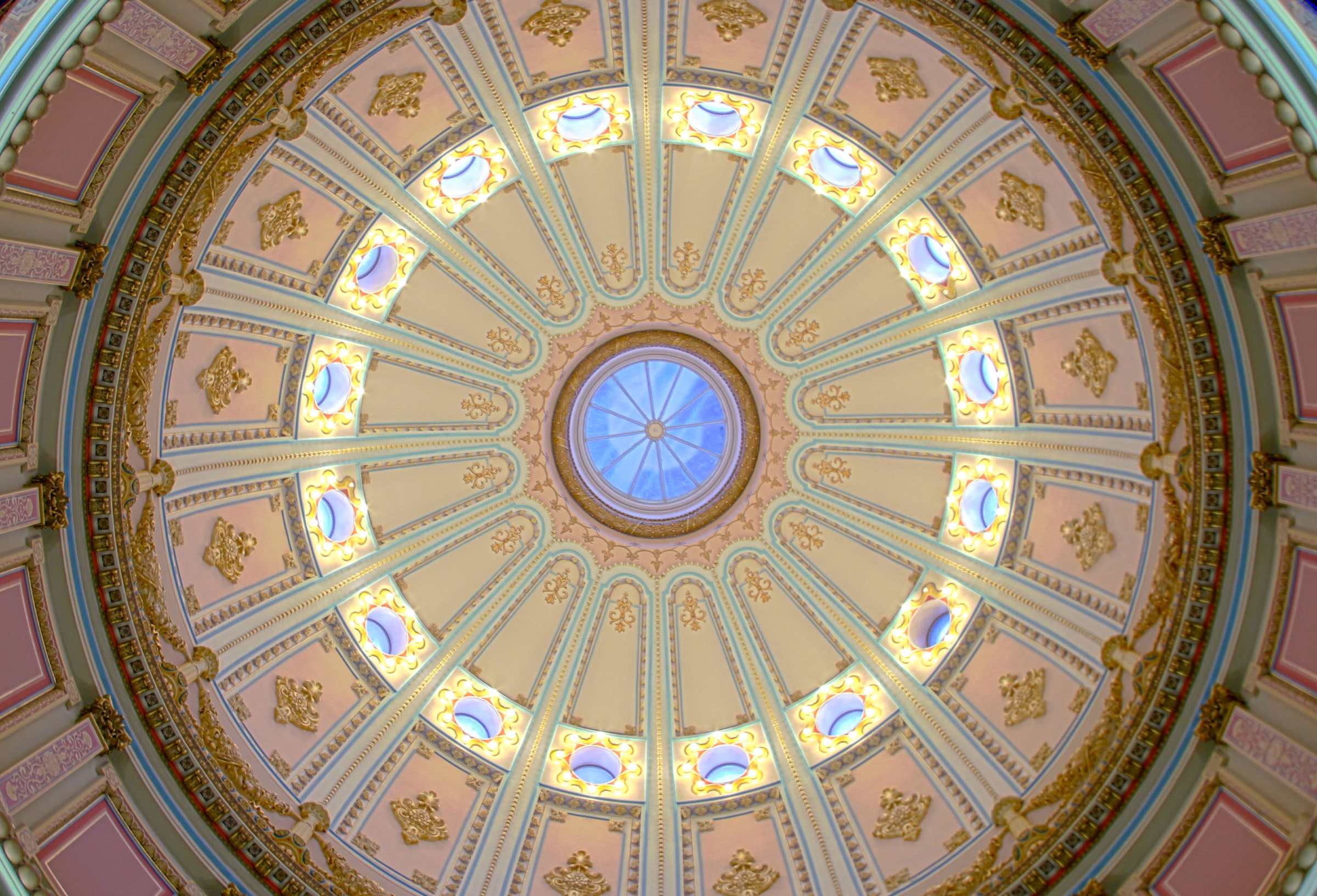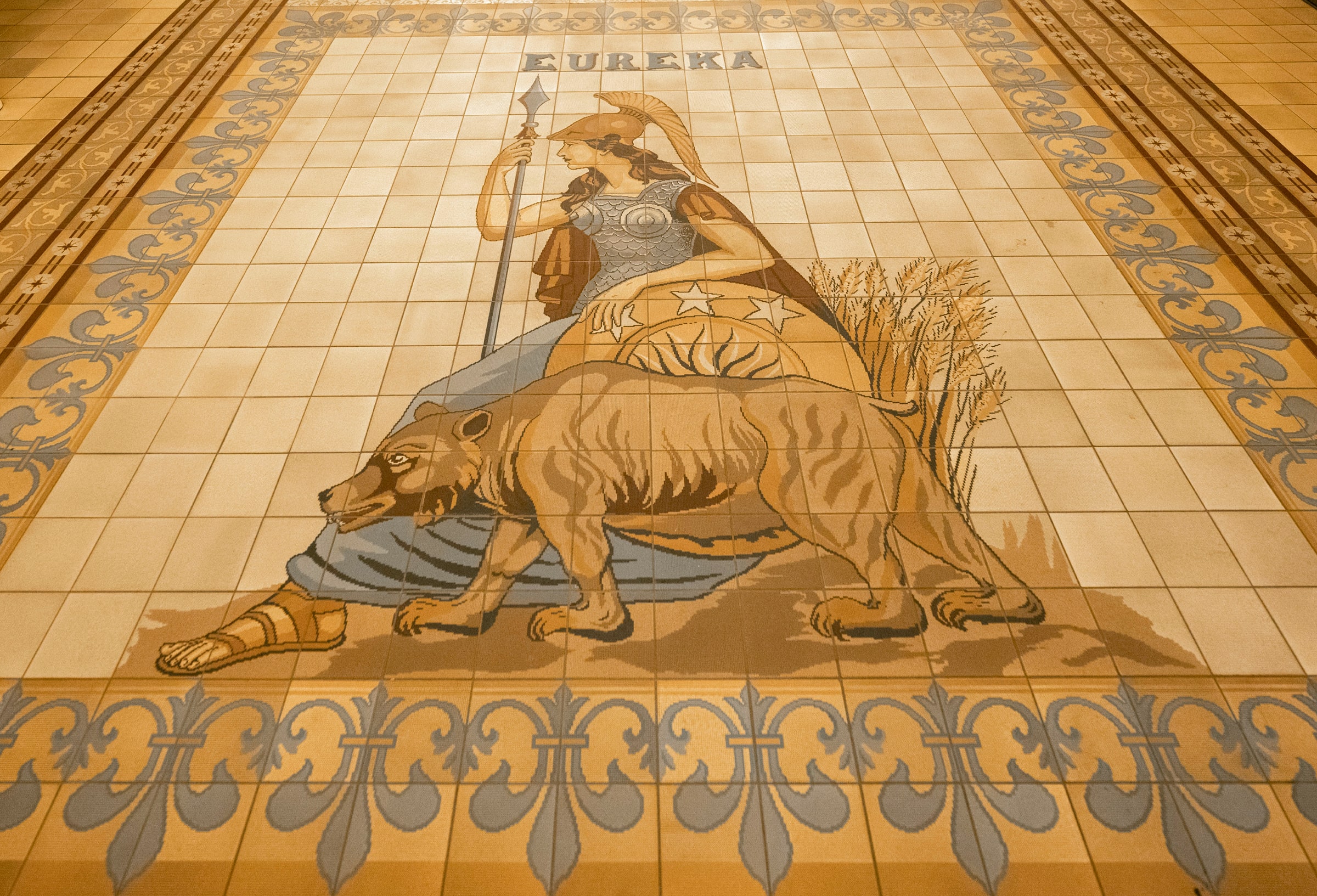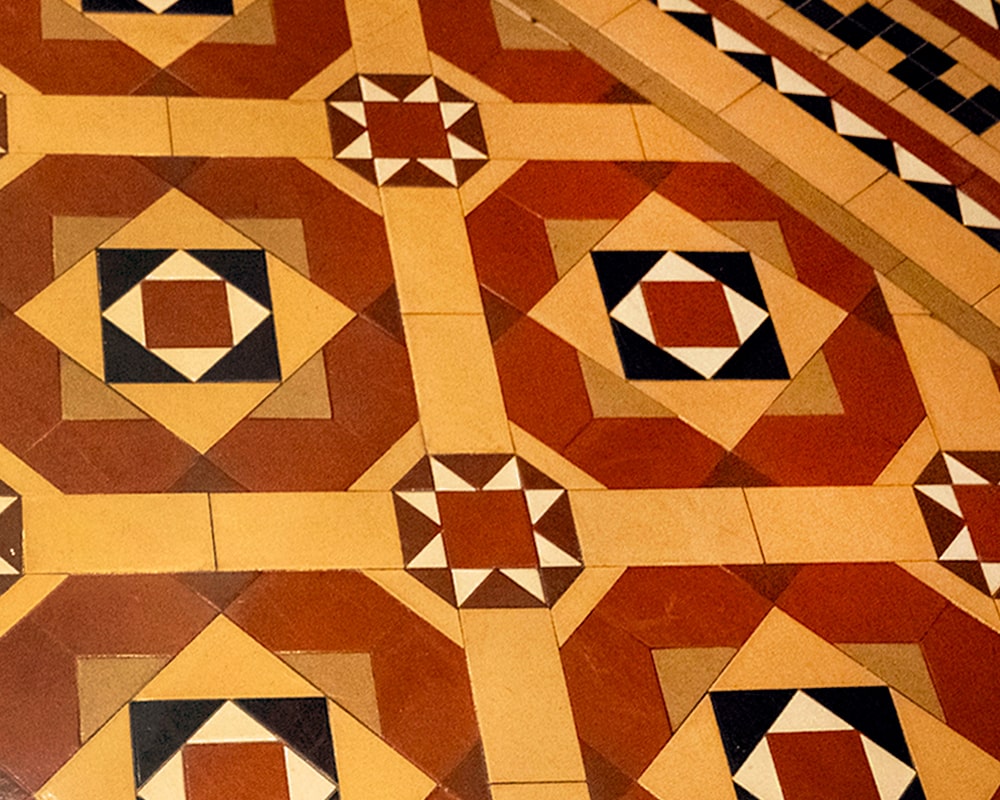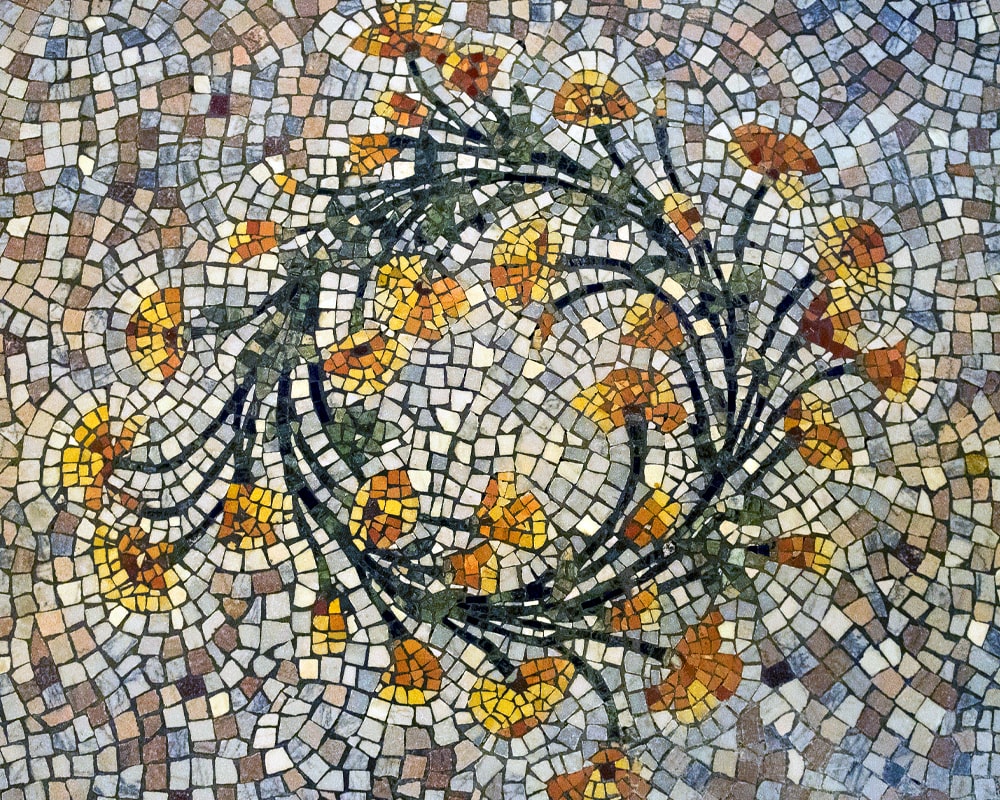Architecture
The Capitol Exterior
The Cupola and Golden Ball
Neo-Classical design can frequently be seen in public architecture, particularly capitol buildings, throughout the United States. The California State Capitol was partially modeled after the United States Capitol. The latter features a bronze statue of a female figure in a helmet, called the Statue of Freedom, as the ornament atop the building’s dome. Given the already marked resemblance between the two capitols, the absence of a statue on the California State Capitol was intended to help distinguish between the two buildings. The California Capitol’s dome is crowned instead with a golden ball, reminiscent of a gold nugget, to remind visitors of the state’s Gold Rush heritage.
The ball is gold-plated copper and measures nearly three feet in diameter. It was affixed to the cupola at the apex of the California State Capitol building on October 29th, 1871. Though it was a part of architect Rueben Clark’s original vision, not everyone in Sacramento was happy with the design. Gordon Cummings, the second Capitol architect, expressed his dislike of the ornament to the Capitol Commissioners. Minutes from a June 1872 meeting record that Cummings, citing his own and “universal public opinion,” urged the Commission to authorize the purchase of a bronze statue instead. He argued that a statue would be more suitable than the “simply ridiculous and abominable” gold ball, and warned the Commission that if the change was not authorized, “whatever may be the other beauties of the building and grounds, the defect will forever remain a slur on our taste.” Cummings went as far as soliciting estimates for a statue, though his plans to replace the Capitol’s golden ball never became a reality.
The roof of the cupola was also gilded with gold in July 1880, ensuring that the Capitol building would sparkle and be the focal point of the city’s skyline. During this installation, The Sacramento Bee reported: “When completed, the work will add much to the appearance of the building and will have a fine effect at a distance of several miles from the city. It will also perhaps be of service to surveyors in prosecuting their labors, as under the sun’s rays, the gilded top will be discernable from every point of the compass.”
The Dome
Since prehistory, the semi-spherical dome shape has been associated with divine and royal power. Burial mounds, huts, granaries, and kilns are some of the earliest examples of the use of domes in architecture. Byzantine and Roman architects began to construct larger-scale domes.
During the Renaissance, most domes were built for temples or churches. In 1418, Italian architect Filippo Brunelleschi employed a mathematical perspective to establish new rules of proportion and symmetry. Brunelleschi’s theory was developed from his observation that the apparent size of an object decreases as its distance from the eye increases.
His innovative new plan included the construction of a dome-within-a-dome. The two would be held together with sandstone rings like a barrel. This would ensure stability while providing impressive exterior and interior views.
Brunelleschi’s design was used in the creation of the California State Capitol’s dome. The interior of the dome employs iron frame construction, allowing the copper outer dome to rise high above Capitol Park and into the Sacramento skyline. From inside the building, the beauty of the Victorian detailing on the inner dome is visible in all its majesty.
The Portico
In architects’ original plans for the Capitol, the west portico (from Latin porta, meaning “passage” or “gate”) served as the building’s main entrance. Its design was derived from the architecture of Greek and Roman temples. A planned “monumental” staircase was never completed, however, and the west portico was not ultimately used as the building’s primary entryway.
Porticos, like that of the Capitol building, are usually made up of four components: a pediment, entablature, columns, and a base.
Pediment
The pediment is a triangular gable situated beneath sloping rooflines. On the pediment is the tympanum. This elongated triangular space often contains sculptural reliefs. Decorative framing cornices and acroteria, or free-standing sculptures, can be seen along the roof lines. When the original California Capitol was constructed, the rooftop and pediment statuaries were created by sculptor Pietro Mezzara. Thirty figures, urns, and emblems adorned the Capitol in 1873. These elements were removed during the Capitol’s 1906 renovation and subsequently lost. Today, only the statuary on the west front pediment tympanum is original. Mezzara’s design features an 11-foot-high Minerva, Roman goddess of wisdom, with a bear at her feet. The figures to her left symbolize Justice and Mining; those to her right personify Education and Industry.
Entablature
The entablature is the horizontal base of the pediment that supports the columns beneath it. Entablatures can be decorated along their lengths with sculptural friezes.
Columns
Large vertical columns support the pediment and its entablature. The California State Capitol’s portico features eight Corinthian columns. Drawn from the architectural traditions of ancient Greece, Corinthian columns can be recognized by the ornate leafy carvings on their uppermost section (also called a “capital”).
Base
The columns of the portico rest upon a ground-level base. This foundation usually features a series of ascending steps that allow entry into the building.
The Capitol Interior
The Rotunda and Inner Dome
The California State Capitol building was intentionally designed to convey messages through its use of symbolism. The bicameral, or two-branched, legislature of the state government is represented in the floorplan of the building. The Senate and Assembly each have their own wing on opposite sides of the circular rotunda – a space that represents unity and balance. Considered a symbol of democracy, the rotunda occasionally serves as a ceremonial space. More frequently, it serves to welcome the hundreds of visitors who explore the Capitol each day. While visitors take photographs and sign up for tours, legislative staffers, lawmakers, reporters, and museum employees help carry out and document the work of state government.
Though the rotunda rises 120 feet from the basement of the building to the oculus at the apex of the inner dome, most visitors’ first glimpses of the room are from the first floor. Standing on Belgium black and Vermont white marble tiles arranged in a checkerboard pattern, guests are surrounded by decorative murals. These murals feature design motifs of swirling foliage, urns, and stylized griffins – mythical animals with the heads of lions and the bodies of eagles.
From the rotunda, visitors have an unobstructed view of the ornamentation of the inner dome. Combining elaborate Victorian detail with Neo-Classical elements, the rotunda and inner dome incorporate decorative elements unique to California. A band of cast-iron grizzly bears observe visitors from the frieze at the base of the dome. Stylized versions of Minerva, the Roman goddess, sit atop the arched openings that lead into the second-floor rotunda walkways. Eagles, representing the United States, grace the Corinthian capitals of the 16 pilasters surrounding the rotunda. The frescoing of the interior dome reflects the elaborate Renaissance Revival style popular during the nineteenth century. Pastel fleur-de-lis patterns and plaster festoons gilded with gold reflect light from the dome’s sixteen circular windows into the halls below. At the apex of the dome is a large window called the oculus. Although not visible from the rotunda, a circular metal staircase extends 90 feet above the oculus to the cupola on top of the Capitol’s outer dome.
Capitol Mosaics
Four large tile groupings, featuring a seated Minerva beside a grizzly bear, are located in the north and south first-floor hallways of the Capitol building. Known as the “Eureka” mosaics, due to their inclusion of California’s state motto, these groupings were made using reproduction tiles during the 1970s restoration. Examples of the originals, installed in 1896, can be found in the Eureka Room in the Capitol basement.
Although construction began on the California State Capitol in the 1860s, Italian mosaicists installed marble tiles on the second floor in the north and south wings during the building’s first remodel in 1906. These floors consist of gray and peach marble with black, yellow, and red marble borders. Each section features golden poppy designs. The marble pieces used range from a quarter-of-an-inch to two inches in size. During the restoration in the 1970s, mosaicists completely disassembled the floor and cleaned each marble piece individually. They were then reinstalled using the exact processes that artisans had used 70 years prior.
In the second-floor rotunda, visitors will observe a geometric mosaic floor of earth-toned shapes. These patterns create a “marquetry” effect similar to the inlaid woodwork of Renaissance Revival style furniture. The original tiles were manufactured by Maw and Company in Shropshire, England by hand using colored clay. The Capitol and Judge Edwin Crocker’s art gallery (now the Crocker Art Museum) in Sacramento were the only two buildings in the west to utilize these tiles. Despite a reputation for durability, the majority of these tiles had to be replaced with reproductions during the restoration – though the patterns remain faithful to the original design.







